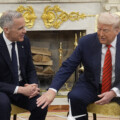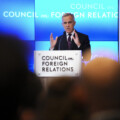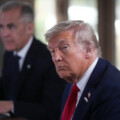Although President Trump didn’t impose tariffs on Canada on day one of his new administration, there are signs that they’re still coming, and Prime Minister Justin Trudeau has signaled that his government will “respond robustly”—including matching dollar-for-dollar tariffs—when they eventually do.
In response, Conservative Party leader Pierre Poilievre has called for parliament to be recalled on an emergency basis to approve new security funding and address the broader risks to Canada’s economy.
We have an emergency.
— Pierre Poilievre (@PierrePoilievre) January 21, 2025
Reopen Parliament now.
To take back control and put Canada First: https://t.co/eIy7PDua09 pic.twitter.com/AfF0glBEd8
Some pundits have argued that this is political grandstanding because parliamentary authority isn’t required for retaliatory tariffs. But that’s only part of the equation. The government will need Parliament’s approval to allocate any incoming tariff revenues to Canadian businesses or households. Otherwise, its retaliatory tariffs will amount to a massive tax hike at a moment when Canada’s economy and Canadians themselves are already under stress.
Canadian policymakers must understand the imposition of tariffs and a clear plan to allocate the resulting revenues as a two-sided policy package. The implementation of the former without the ability to enact the latter is a big problem. It’s bound to contribute to deteriorating business and consumer confidence at a time of economic fragility. Put bluntly: the ongoing prorogation of parliament in this context puts Canada’s economy at risk and increases the probability of a recession.
The amount of revenue that tariffs would generate depends on the base, rates, and the response of Canadian consumers. Ken Boessenkool has estimated that across-the-board tariffs of 25 percent could generate as much as $100 billion in revenues over the short- and medium-term. Even if one assumes that the tariffs will only apply to particular goods and levied at a lower rate, it’s quite possible that they could produce billions in new government revenues.
Yet without the ability to enact legislation, those revenues will enter the consolidated revenue fund and offset the Trudeau government’s higher spending at the expense of Canadian businesses and households who will of course bear the brunt of the tariffs.
If Canada is to impose retaliatory tariffs, it must be an act of trade policy rather than a backdoor fiscal policy. A trade war with the U.S. cannot be the way that the Trudeau government tries to fix its structural deficit.
This point is worth emphasizing: using tariff revenues to lower the deficit would be the fiscal equivalent of dumping buckets of water in a sinking boat. Not only would it fail to address the structural gap between federal revenues and expenditures, but it would also be countercyclical: it would involve pulling scarce resources out of the economy at the precise moment when it’s facing recessionary pressures.
The Conservatives should therefore insist that every dollar in tariff revenue is returned to businesses and households on a revenue-neutral basis. This may seem like a self-evident demand but there’s reason to doubt the government here. Readers will recall that in the context of the COVID-19 pandemic, it tried to grant itself unprecedented spending and taxation powers. As a result, one could be understandably skeptical about how the Trudeau government might deploy an incoming tariff windfall in the face of a new crisis.
Boessenkool recommends that the simplest solution is to dedicate half of the revenues to offsetting a reduction in the GST and the rest to a wage subsidy program that aims to minimize production cuts and layoffs. That strikes me as a sensible policy response. One of its benefits is that public dollars would support the broad-based retention of workers rather than having the government effectively select which industries or firms ought to receive relief.
There are no doubt other policy options—including significantly boosting the GST/HST credit or enriching the work-sharing program—but the key point is that Ottawa needs a transparent plan to demonstrate to Canadians that retaliatory tariffs aren’t just going to pad its deteriorating balance sheet.
This type of thinking should have frankly been happening since Trump first threatened the imposition of tariffs in late November. But there’s no evidence to indicate that it was. The Trudeau government’s abortive Fall Economic Statement simply assured Canadians that its so-called “Team Canada approach…will be successful.”
The government has subsequently collapsed into chaos. The prime minister’s essentially disappeared for weeks before resigning earlier this month and provincial premiers have increasingly filled the void. Now the prorogation of Parliament precludes his government from being able to enact new tax or spending measures. So while it can impose retaliatory tariffs on U.S. imports, it cannot provide relief to Canadians.
Poilievre is therefore right. The prime minister should immediately summon the return of Parliament to approve new security funding as well as prepare for the eventuality of retaliatory tariffs and his government’s plan to distribute the revenues to businesses and households. His political interests—and those of his party—shouldn’t trump the economic needs of Canadians.










